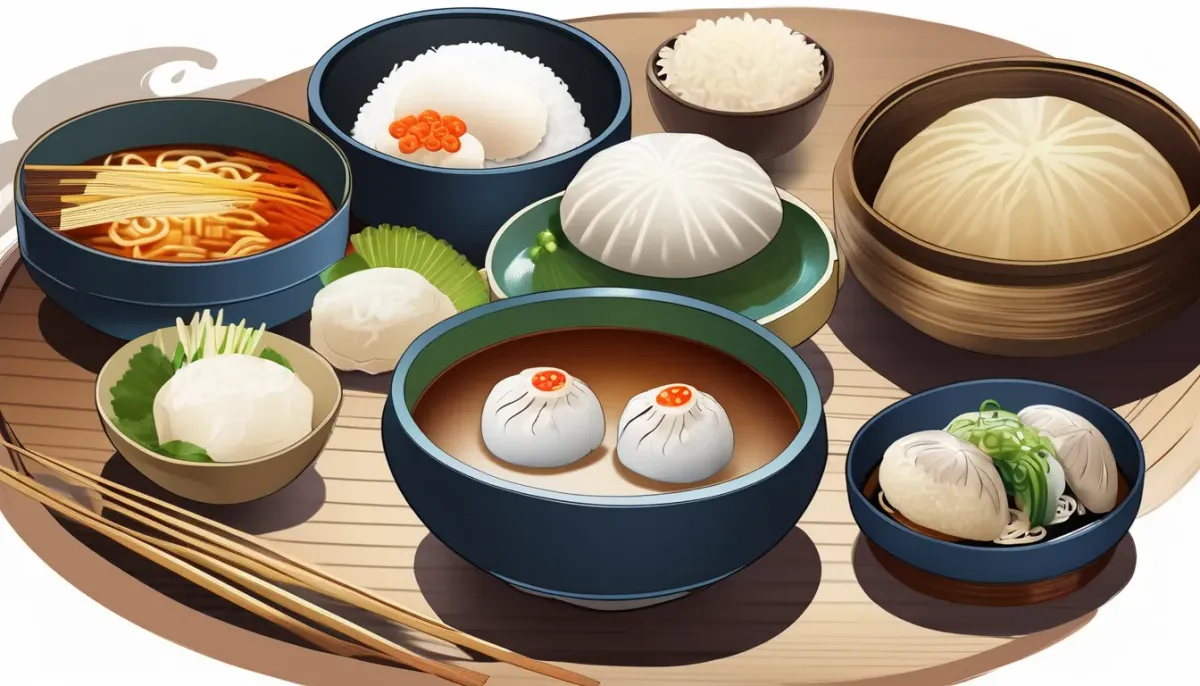The Cultural Divide: Rice and Wheat in Chinese Cuisine
China’s food culture splits between rice in the South and wheat in the North, influenced by climate and history. Southern cuisine is light and fresh, while Northern dishes are hearty and bold, reflecting how environment shapes regional culinary traditions.

The Cultural Divide: Rice and Wheat in Chinese Cuisine
China's culinary landscape is as vast and diverse as its geography. One of the most distinct and enduring culinary divides in China is the preference for rice in the South and wheat-based foods in the North. This regional distinction is not merely about taste but is deeply rooted in the geography, history, and culture of these areas. Understanding this difference offers a fascinating glimpse into Chinese food culture, traditions, and how the environment shapes what people eat.
The Origins of Rice Culture in Southern China
Southern China is characterized by its warm, humid climate, with ample rainfall and abundant river systems, making it an ideal environment for growing rice. Rice cultivation in China dates back thousands of years, with archaeological evidence suggesting that rice was first domesticated in the Yangtze River basin. Over time, rice became the staple food of the South, ingraining itself into the region's culture, economy, and daily life.
Rice is more than just a source of sustenance in Southern China; it is a symbol of prosperity, harmony, and family unity. Many traditional Southern dishes are designed to highlight the delicate, fragrant qualities of rice. For instance, dishes like Hainanese chicken rice and Cantonese-style steamed rice rolls are celebrated for their subtle yet complex flavors. In many ways, rice forms the foundation of Southern Chinese cuisine, providing a versatile base for a wide array of dishes that emphasize freshness, lightness, and balance.
This rice-centric culture also influences local agricultural practices. The terraced rice paddies that cover the Southern hillsides are not only a marvel of agricultural engineering but also a testament to the region's reliance on and reverence for rice. The cultivation of rice has shaped the landscape, economy, and even the social fabric of Southern China, with countless festivals, rituals, and traditions centered around the rice harvest.
The Wheat-Based Diet of Northern China
In contrast, Northern China is defined by a much harsher, drier climate, where cold winters and hot summers prevail. These conditions are not conducive to rice cultivation but are ideal for growing hardy grains like wheat, millet, and barley. As a result, wheat became the staple grain of the North, giving rise to a rich tradition of wheat-based foods such as noodles, dumplings, steamed buns, and pancakes.
Wheat flour is incredibly versatile and can be made into a wide variety of foods that are hearty, filling, and perfect for the cold, often harsh, climate of the North. Iconic Northern dishes such as Beijing-style noodles, Shaanxi hand-pulled noodles, and Tianjin stuffed buns are celebrated for their robust flavors and chewy textures, reflecting the Northern palate's preference for bold, savory foods.
Wheat's influence extends beyond the dining table; it has shaped the very culture and traditions of Northern China. For example, dumplings are a must-have during Chinese New Year in the North, symbolizing wealth and prosperity. The art of noodle-making is not just a culinary skill but also a cultural practice passed down through generations. The rituals surrounding wheat-based foods reflect the Northern Chinese emphasis on family, togetherness, and resilience.
Key Differences in Southern and Northern Chinese Food Culture
The culinary divide between rice and wheat in China goes beyond the grains themselves, extending into differences in taste, ingredients, cooking methods, and dining etiquette.
1. Differences in Flavor Preferences
Southern and Northern Chinese food cultures diverge significantly in terms of flavor profiles. Southern Chinese cuisine tends to favor light, fresh, and subtle flavors. Dishes are often steamed, boiled, or lightly stir-fried, allowing the natural flavors of the ingredients to shine through. This preference for mild and delicate tastes is well represented in dishes like Cantonese dim sum, Hunan steamed fish, and Fujianese seafood soups.
In contrast, Northern Chinese cuisine is known for its bold, rich, and hearty flavors. The cooking styles of the North often involve roasting, braising, and frying, resulting in dishes that are intensely flavored and warming—perfect for the cold Northern winters. Signature dishes like Peking duck, Mongolian hotpot, and Sichuan-style spicy noodles reflect the Northern taste for savory, salty, and sometimes spicy flavors.
These differences in flavor preferences are closely linked to the respective climates of the regions. The South’s warm, humid environment naturally lends itself to lighter foods that are refreshing and easy on the stomach, while the North’s colder climate calls for heartier, more robust dishes that provide warmth and energy.
2. Differences in Ingredient Selection
The abundance of water and a warmer climate in Southern China allow for a greater diversity of fresh produce, fish, and seafood. Southern Chinese cuisine often emphasizes fresh, tender ingredients, and dishes frequently feature vegetables, seafood, and other fresh proteins. This access to diverse ingredients allows Southern Chinese cooks to experiment with textures and flavors, often favoring dishes that are as pleasing to the eye as they are to the palate.
Northern China, on the other hand, has a more limited growing season due to its cold winters and dry climate, which affects the availability of fresh produce. As a result, Northern Chinese cuisine often relies more heavily on preserved or pickled vegetables, robust meats like beef and lamb, and hearty grains. Ingredients are selected not just for their flavor but also for their ability to sustain people through long, cold winters. This practicality is reflected in the Northern use of fermented vegetables, hearty meats, and sauces that pack a punch of flavor.
3. Differences in Cooking Methods
Cooking methods vary widely between North and South, reflecting regional preferences and the types of foods commonly consumed. In the South, cooking techniques like steaming, boiling, and braising are preferred because they preserve the freshness and natural flavors of the ingredients. Steamed fish, rice porridge, and gently simmered soups are just a few examples of Southern dishes that emphasize light, fresh flavors.
Northern cooking, however, often involves more intensive methods like roasting, frying, and stir-frying, which impart deeper, richer flavors and a satisfying texture to the food. Grilled lamb skewers, pan-fried dumplings, and stir-fried noodles are popular examples of Northern dishes that showcase these techniques. The emphasis in the North is on cooking methods that enhance flavor and texture, making each meal feel hearty and filling.
4. Differences in Dining Etiquette and Culture
Even the way meals are consumed in the North and South reflects regional cultural differences. In Southern China, dining is often a quieter, more refined affair, with an emphasis on politeness, sharing, and respect for the communal table. Meals are typically shared family-style, with each dish placed at the center of the table for all to enjoy. Southern hospitality is characterized by elegance and restraint, where every dish and every action at the table reflects a sense of balance and harmony.
In contrast, Northern dining culture is often more boisterous and communal. Meals are a time for lively conversation, laughter, and sometimes even a bit of friendly banter. Northern Chinese people are known for their warmth and generosity, often encouraging guests to eat more and enjoy themselves fully. It’s common for family and friends to gather around a big pot of hotpot or a table full of dumplings, enjoying each other’s company as much as the food itself.
Conclusion
The distinction between rice in the South and wheat in the North is a defining feature of Chinese culinary culture, deeply rooted in the country's geography, history, and social customs. While these differences reflect the diverse environmental conditions across China, they also highlight how regional cultures have adapted to and celebrated their local ingredients.
Whether it's the refined and delicate dishes of the South or the hearty and robust flavors of the North, each region brings its own unique approach to Chinese cuisine, enriching the country’s culinary tapestry. Understanding this regional divide not only enhances our appreciation of Chinese food but also offers valuable insights into the ways culture, environment, and history shape our eating habits. No matter where one is in China, food is more than just sustenance—it is a powerful expression of regional identity, community, and tradition.



